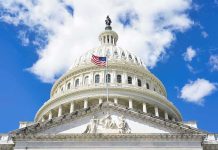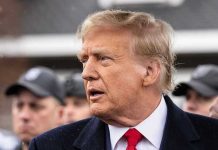
Elon Musk just tied his entire future at Tesla to a $1 trillion compensation package designed to give him ironclad control over the company’s humanoid robot army—and he’s not bluffing about walking away if shareholders reject it.
Quick Take
- Musk has publicly linked his $1 trillion compensation package directly to maintaining control over Tesla’s Optimus robot development and deployment strategy
- Tesla plans to begin mass-producing the third generation of Optimus in Q1 2026, positioning humanoid robots as the company’s next major revenue driver
- The compensation package faces a shareholder vote in November 2025, with Musk threatening to leave Tesla if the package is rejected
- Musk believes the robot army could eliminate poverty and transform industries, but skeptics question whether Tesla can deliver on its ambitious timeline
The $1 Trillion Gamble That Could Reshape Tesla’s Future
In October 2025, Elon Musk made an unprecedented move: he explicitly connected his $1 trillion compensation package to his ability to maintain control over Tesla’s artificial intelligence and robotics initiatives. This isn’t typical corporate drama. Musk is signaling that he views his personal leadership as inseparable from Tesla’s most ambitious project—building what he calls a “robot army” of humanoid machines capable of performing virtually any task humans can do. The stakes couldn’t be higher, and neither could the price tag.
Why Musk Believes He Needs Total Control
Musk’s argument is straightforward but audacious: only his vision and leadership can ensure that Tesla’s advanced AI and robotics are developed responsibly and deployed strategically. He’s not asking for control over vehicle production or traditional business operations. He’s asking for control over the technology that he believes will define the next century. Without that control, Musk has suggested he would take his talents elsewhere, potentially to other ventures or companies where he can pursue his robotics ambitions without interference.
Tesla’s Optimus: From Prototype to Production
Tesla first announced the Optimus project in 2021, promising rapid development and mass production. Since then, the company has demonstrated early prototypes performing basic tasks, but commercial units have never reached consumers. Production delays and technical challenges have tested Musk’s credibility. However, Tesla claims it has now completed the mass production line for Optimus and plans to begin building the third generation in Q1 2026. If this timeline holds, it would represent a significant acceleration in the company’s robotics ambitions.
The Financial Reality Behind the Vision
Tesla reported record vehicle sales in October 2025, but profits have declined significantly. The company is pouring billions into AI and robotics research and development, driving up operating expenses and capital expenditures. Shareholders are watching closely, wondering whether these massive investments will eventually pay off or whether they represent a distraction from Tesla’s core electric vehicle business. The $1 trillion compensation package is essentially Musk’s way of saying: trust me, this investment will be worth it.
What “Robot Army” Actually Means
Musk envisions millions of humanoid robots deployed across industries—manufacturing, healthcare, construction, and homes. He’s argued that such widespread automation could eliminate poverty by making goods and services nearly free. Critics argue this vision is decades away from reality and that Musk’s timeline has consistently proven optimistic. The gap between Musk’s promises and Tesla’s actual delivery on projects like the Cybertruck and full self-driving has made investors cautious about accepting his robotics projections at face value.
The Shareholder Vote That Could Change Everything
Tesla shareholders will vote on Musk’s compensation package in November 2025. This is not a routine approval process. Musk has made clear that rejection would trigger his departure from the company. The board and shareholders face a genuine dilemma: approve the package and give Musk the control he demands, or reject it and risk losing the visionary who founded and has led Tesla through its most transformative years. Either choice carries enormous consequences for Tesla’s future direction and the broader robotics industry.
Why This Matters Beyond Tesla
The outcome of this compensation vote will signal whether Tesla and its shareholders believe humanoid robots represent the future of the company and industry. Competitors like Figure AI and Unitree Robotics are also developing humanoid robots, but none have Tesla’s resources or Musk’s public profile. If Tesla succeeds in scaling Optimus production and deployment, it could accelerate the robotics revolution. If it fails, it might validate skeptics who argue that Musk’s ambitions routinely exceed his company’s execution capabilities.
Sources:
TechCrunch: Elon Musk frets over controlling Tesla’s robot army as car biz rebounds
Anadolu Agency: Elon Musk seeks $1T to retain influence over Tesla’s robot army
eWeek: Elon Musk $1 trillion robot army












